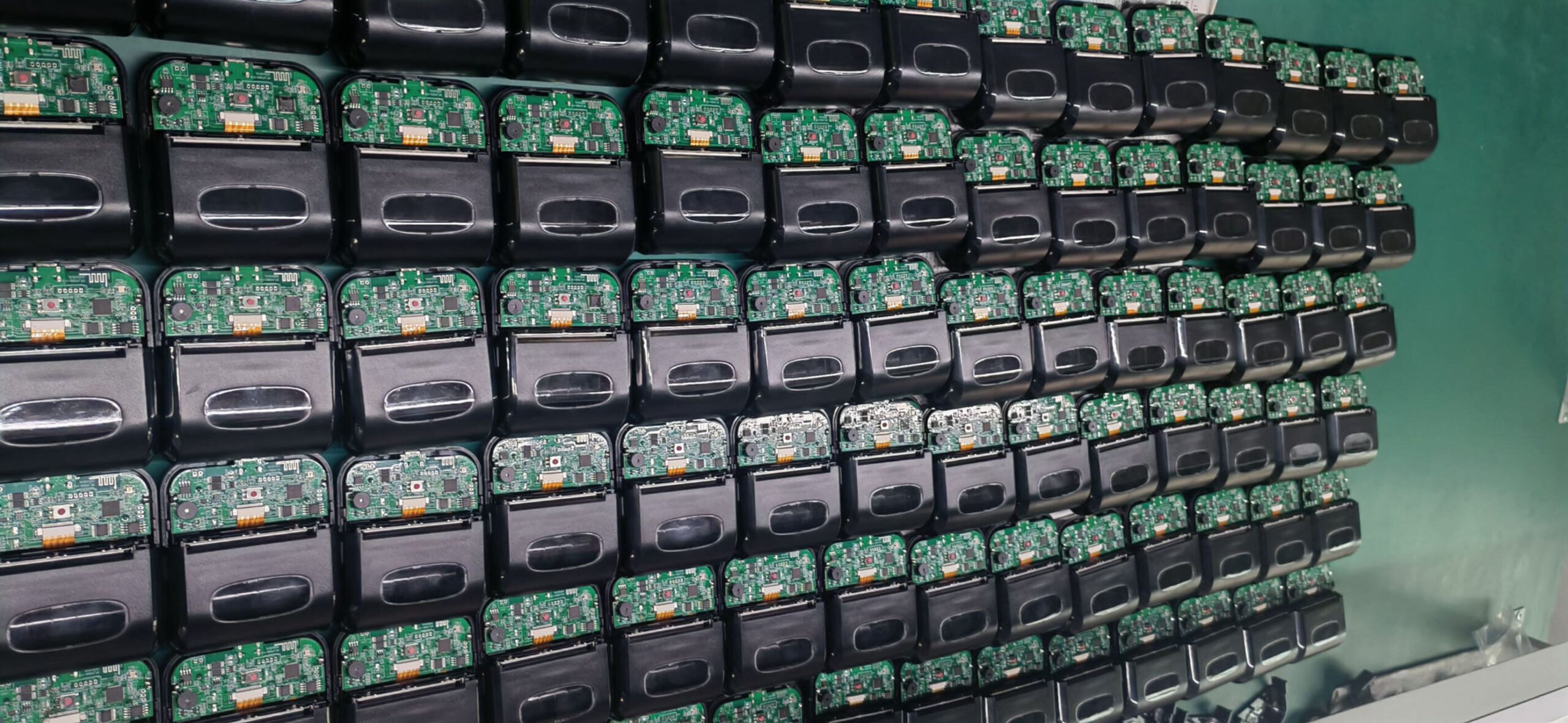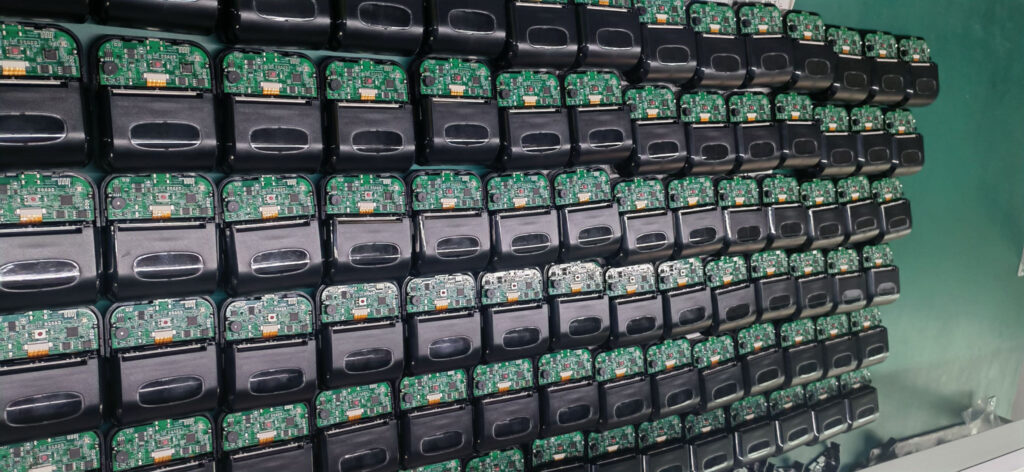Introduction bluetooth printer
In today’s fast-paced business environment, efficiency and mobility are paramount. Bluetooth thermal printers have emerged as a popular choice for businesses looking to enhance their operational capabilities. These printers allow users to print receipts, labels, and documents wirelessly from various devices, providing a level of convenience that traditional printers simply cannot match. This guide aims to help small business owners, delivery professionals, IT developers, and event organizers understand the importance of Bluetooth thermal printers and how to choose the best one for their needs.

What is a Bluetooth Thermal Printer?
Definition and Technology
A Bluetooth thermal printer is a compact printing device that uses thermal printing technology to produce high-quality prints quickly. Unlike traditional printers that require ink or toner, thermal printers use heat-sensitive paper to create images and text. The integration of Bluetooth technology allows these printers to connect wirelessly to smartphones, tablets, and computers, making them ideal for mobile applications.
Why Bluetooth Matters
Bluetooth connectivity offers several advantages over other options like USB or Wi-Fi. First and foremost, it allows for greater mobility; users can print from anywhere within the effective range without being tethered by cables. Additionally, Bluetooth connections are generally easier to set up and maintain than Wi-Fi networks, making them perfect for environments where quick deployment is essential. Typical use cases include retail transactions, logistics operations, and event ticketing.
Benefits of Bluetooth Thermal Printers
Mobility and Portability
One of the most significant benefits of Bluetooth thermal printers is their portability. These devices are lightweight and compact, allowing users to carry them easily in bags or even pockets. For example, delivery professionals can print shipping labels on the go without needing a fixed printing station. Similarly, mobile point-of-sale (POS) systems benefit greatly from these printers during transactions at food festivals or outdoor markets.
Easy Setup and Connectivity
Setting up a Bluetooth thermal printer is typically straightforward. Users can pair their devices with smartphones or tablets in seconds without dealing with cumbersome cables. This ease of connectivity reduces clutter in workspaces and allows for more flexible setups. Imagine an event organizer who needs to print tickets on-site; a Bluetooth printer enables them to do so quickly without worrying about finding an outlet or managing cables.
Cost and Energy Efficiency
Bluetooth thermal printers are generally more cost-effective than traditional printers. They eliminate the need for expensive ink cartridges or toners since they use heat-sensitive paper instead. Additionally, many models are battery-powered, allowing for flexibility in usage while also reducing energy costs associated with running a printer continuously.
Use Cases for Bluetooth Thermal Printers
Retail and POS Systems
In retail environments, Bluetooth thermal printers are invaluable for mobile POS systems. They enable businesses to print receipts instantly at checkout stations or even while customers are browsing the store. This capability has been particularly beneficial for small businesses like food trucks that require quick transactions without the need for a full POS setup.
Logistics and Delivery
For logistics professionals, having the ability to print shipping labels on the go can streamline operations significantly. Delivery drivers can create labels directly from their mobile devices while at the customer’s location, enhancing efficiency and accuracy in package handling.
Event Ticketing
Bluetooth thermal printers have revolutionized event ticketing by allowing organizers to print tickets on-site as attendees arrive. This capability reduces waiting times and improves the overall experience for guests at concerts, exhibitions, and conferences.
Medical and Office Use
In medical settings, these printers can be used to print wristbands or labels directly at patient bedsides. Their compact size makes them suitable for tight spaces in hospitals or clinics where mobility is crucial.
Key Features to Consider When Buying a Bluetooth Thermal Printer
Printing Specifications
When selecting a Bluetooth thermal printer, consider its printing speed (measured in mm/sec), resolution (DPI), and compatibility with various paper sizes. A printer that offers high speed and resolution will enhance productivity while ensuring quality output.
Device Compatibility
Ensure that the printer is compatible with your devices—whether they run on Android, iOS, Windows, or Linux. This compatibility is crucial for seamless integration into your existing workflows.
Battery Life and Portability
For mobile use cases, battery life is an essential factor. Look for models that offer long-lasting batteries capable of supporting extended periods of use without frequent recharging.
Connectivity Range
Evaluate the effective Bluetooth range of the printer to ensure it meets your operational needs. A longer range allows for more flexibility when printing from various locations within your workspace.
Support for SDK and ESC/POS Commands
If you’re an IT developer looking to integrate printing capabilities into your applications, ensure that the printer supports Software Development Kits (SDKs) and ESC/POS commands for better compatibility with your software solutions.
Top Brands and Models in the Market
Examples of Leading Brands
Several manufacturers stand out in the Bluetooth thermal printer market:
Epson: Known for its reliable printing solutions across various industries.
Zebra: Offers robust models ideal for logistics and retail applications.
Eden: Competitive price with excellent battery life.
Comparison of Popular Models
| Brand | Model | Print Speed | Applications | Key Features |
| Epson | TM-P20 | Up to 100 mm/sec | Retail POS | Compact design, easy integration |
| Zebra | ZQ520 | Up to 150 mm/sec | Logistics | Rugged construction, long battery life |
| Eden printer | MP-588 | 60-90mm/sec | Mobile ticketing | Lightweight design, standby 55 hours |
These brands offer various features tailored to specific applications; thus, assessing your business needs before making a decision is crucial.
How to Set Up a Bluetooth Thermal Printer
Step-by-Step Guide
- Pairing the Printer: To pair your printer with a smartphone or POS system:
- Turn on the printer:Enable Bluetooth on your device.Search for available devices.Select your printer from the list and complete pairing.
- Installing Drivers: If you’re using a PC,Download the appropriate drivers from the manufacturer’s website.
- Follow installation instructions provided in the user manual.
Troubleshooting Tips
- Common connectivity issues may arise during setup
- Ensure that both devices have Bluetooth enabled.
- Restart both devices if they fail to connect.
- Check if there are any software updates available for either device.
Frequently Asked Questions
How do I know if a Bluetooth thermal printer is compatible with my device?
Check the manufacturer’s specifications regarding compatibility with operating systems (Android/iOS/Windows).
What is the average lifespan of a Bluetooth thermal printer?
With proper maintenance, most models can last between 3 to 7 years depending on usage frequency.
Tips for Maintenance
- To extend your printer’s lifespan.
- Regularly clean the print head according to manufacturer guidelines.
- Ensure proper paper loading techniques are followed.
- Monitor battery health if using rechargeable models.
Conclusion
In summary, choosing a Bluetooth thermal printer involves considering various factors such as mobility, ease of setup, cost-effectiveness, and specific use cases relevant to your business needs. These printers offer significant advantages over traditional models by enhancing operational efficiency while providing flexibility in various environments.


